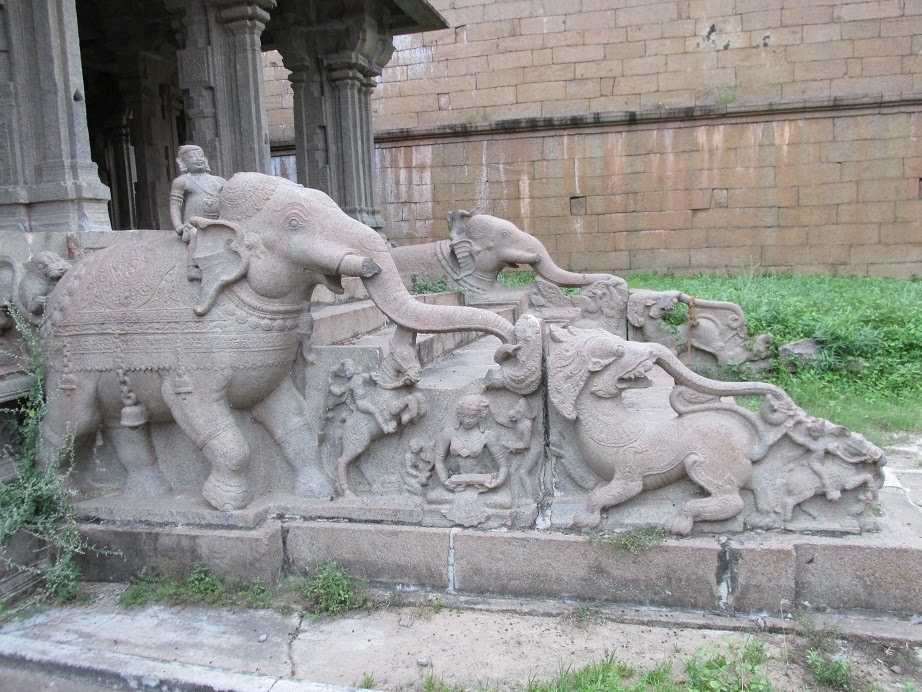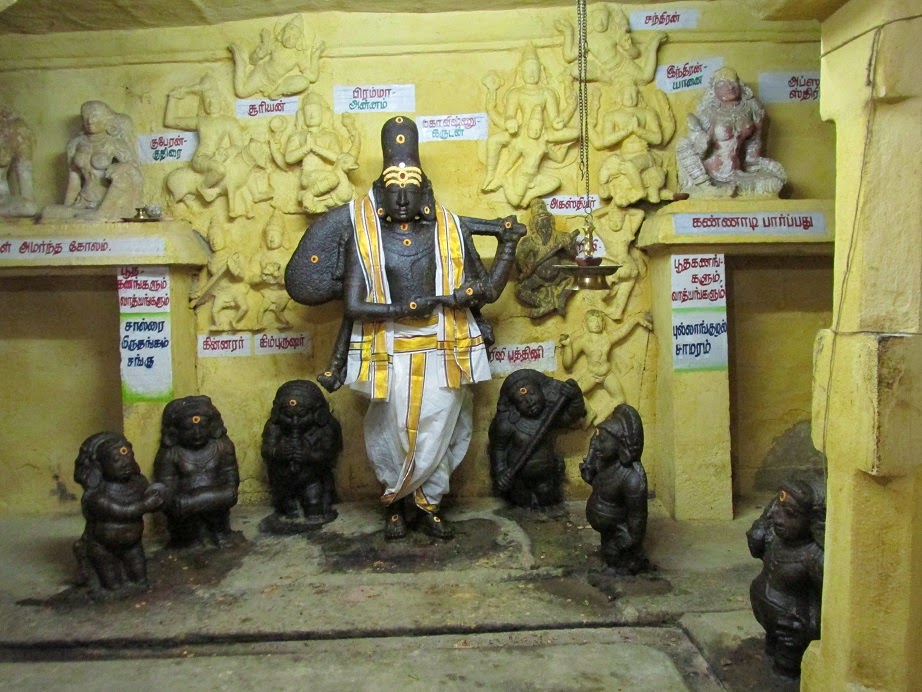Brahmadesham Temple
Site Name: Brahmadesham Temple
Site Type: Hindu temple
Location: Brahmadesam village, near Ambasamudram, near Tirunelveli city, Tamil Nadu state, India
Highlights: A 1000 years old massive temple with many sculptural and architectural marvels
Nearest Railway Station: Ambasamudram
Nearest Airport: Tirunelveli
How to reach: Well connected by road from Ambasamudram; public transportation is unreliable.
Hotel: Few options in Ambasamduram and no option in this village; more options in the nearby city Tirunelveli
Restaurants: Only a few options in the nearby Ambasamudram town
Ambasamudram is a picturesque town located on the banks of the beautiful Tamraparni river and on the foothills of the Western Ghats. The town is known for scenic spots and temples. Brahmadesham is a small village located around 4 km from Ambasamudram. The village has a majestic temple with numerous sculptures and a stunning tower. Let us explore this temple in detail.
Unfortunately, the magnificent temple is in a neglected state today. Irrespective of whether you are a spiritual or a heritage enthusiast, you will never forget this beautiful temple for your entire life if you visit this just once. This is definitely one of the best temples and architectural marvels in South India, which remains unknown.
- It is considered one of the Devara Vaippu Sthalam temples.
- The temple was built by Cholas, Cheras, Pandyas and Nayakkar kings.
- A unique Kankalanathar icon along with a lot of deities and seers which cannot be found anywhere else
- Big entrance wooden gates with intricate carvings
- The hanging bell, along with the chain - made up of a single stone.
- A big icon of Nandi with intricate carvings - made up of single stone.
- The temple has three towers and seven vimanas.
- Somavara mandapa with so many beautiful sculptures of epic characters
- It is the first site among Adi Nava Kailayam temples; it is a Surya sthalam
- Tiruvadirai mandapa with many beautiful sculptures and pillar carvings
- Nataraja made up of Punugu
- The birthplace of Sri Sarvangna Atmendra Saraswati Swamigal, the second Acharya of Kanchi Sankara Mutt
- There are five shrines of Lord Shiva - Kailasanathar, Ilandai Adinathar aka Badari Vaneeswarar, Chokkanathar, Annamalai and Vishwanathar
- Dakshinamurti with a different posture
- God - Kailasanathar
- Goddess - Periyanayaki aka Brahannayaki
- Sthala Vruksham (holy tree) - Ilandai
- Teerth (holy water) - Tamraparni and Ghatna rivers
Brahma and his grandson Romasa Rishi worshiped Lord Shiva on this site. Due to this, the village is called Brahmadesham.
During the period of Raja Raja Chola, the village was gifted to Brahmins for chanting four Vedas. Hence, the place is called Chadurvedi Mangalam or Brahmadeyam.
As per Ghatana Nadi Mahatmiam, the Swayambu Shiva Lingas of Shivasailam, Tiruvaleeswaram and Brahmadesham emerged at the same time.
The original structure of the temple was built probably during the reign of Raja Raja Chola (10th century CE). The current structure is a combination of styles from various royal dynasties. The main shrine was constructed by the Chola kings; the beautiful mandapas were built by the Pandya kings; the attractive wooden decors on the roof were the works of the Chera kings; the gigantic temple towers at the front side and backside were constructed by the Nayaka king Vishwanatha Nayaka. The colossal compound walls were also built by him. Even the Hoysala kings made some additions to the temple.
Temple Layout
Entrance
Front side Mandapa
The area between the tower and the entrance to the main temple is completely covered on top. Although it looks like a typical Kerala-type roof, it is actually made of stone. The stone bell along with the chain can be seen on this roof. It is also made up of a single stone, a sculptural marvel.
The entire area is full of wide pillars with sculptures. A unique feature of these pillars is that there are six pillars placed together to form a single pillar; there are two such combinations of six pillars found in this mandapa.
On either side of the main temple entrance has two big shrines dedicated to Ganesha and Subramanya, respectively. Both these shrines are located atop elevated platforms.
Main Shrine
The principal section of the temple has four sections, sanctum, ardha mandapa, maha mandapa and mukha mandapa.
The east-facing sanctum sanctorum enshrines a large Shiva Linga named Kailasanathar. He is the presiding deity.
The sub-shrine of utsava (metal) Nataraja and Sivakami is located in Maha mandapa. A small Nandi icon facing Lord Kailasanathar is also located here. The hall is full of pillars that rest on lion bases.
An outer mandapa has an attractive wooden entrance with intricate sculptures. This structure appears to be hardly 200-300 years old.
The presiding Goddess is Periya Nayaki or Brahannayaki. Her sculpture is larger in size and extremely beautiful. She is standing and carries a lotus flower on her right arm. Her shrine looks like a separate temple with its vimana, prakara, bali peeth, flagstaff and Nandi.
The front side mandapa of the shrine has pillars with impressive carvings.
The entrance of the shrine has the icon of Ganesha. The shrine's prakara has the sub-shrines of Saraswati, Arumugam with Valli and Devasena, Chandikeshwari, Siddhi Vinayaka, Shaneeswara holding lotus in his right arm (unique style) and Nalayiraththamman (a powerful village deity).
The Original Deity
Tiruvadirai Mandapa
Near Ilandai Adinathar shrine, an important shrine facing the southern direction is located. It is dedicated to Kankalanathar. Kankalanathar, like Bhikshatana, is a form of Lord Shiva who seeks alms; however, it is iconographically different from Bhikshatana. Although the Kankalanathar image is found in many temples, it is very rare to find him accompanied by so many deities and seers. It is incredible to see so many sculptures and bas-relief stucco images in just one shrine.
Kankalanathar and the six Bhuta ganas alone are stone sculptures in this shrine. Kankalanathar has jata makuta (hair dresses like a crown) and big earrings. He has four arms. His lower left arm carries a drum (called Dhakka), and his lower right arm beats that drum using a stick (called Bana). His upper right arm is stretched downwards in Kataka posture. (Generally, an antelope or deer leaps near his arm, which is missing here.) His upper left arm has kankala danda, a staff that carries the bone of the arms and legs of the slain person. The staff is resting on his left shoulder. (As per few legends, it is the corpse of Vishvaksena, the chief guardian of Vishnu, which is carried by Kankalanathar.)
The six bhuta ganas are very small in size when compared to Kankalanathar. They surround him on either side. Each one holds different materials such as Chalarai (a kind of musical instrument), mridangam, conch, chamaram and flute.
The wall behind has so many bas relief stucco images. The images that are found:
- Surya and Chandra on top
- Kubera on the horse, Brahma on Annam (Hamsa), Vishnu on Garuda and Indira on elephant below them
- Kinnara, Kimpurusha and Agastya rishi holding veenas and other musical instruments; two divas (wives of rishis)
- Ganesha on Mooshika, Kartikeya on peacock, Vayu on deer, Varuna on makara, Ishanan on Rishaba (bull), Agni on Mesha (goat), etc.
There are stucco images of beautiful ladies (apsaras) in various postures such as sitting, standing, viewing the mirror, reclining, etc.
Behind the holy tree, there is a big shrine dedicated to Chokkanathar. Chokkanathar is found in the form of Shiva Linga. His consort Meenakshi is also found in a separate sub-shrine. This shrine looks like a separate temple with a separate vimana on top and Nandi in front. The front side mandapa has many pillars with intricate carvings.
In the outer prakara, there is a separate shrine dedicated to Subramanya and his consorts Valli and Devasena.
The outer prakara also houses the shrine of Vishwanatha and Vishalakshi. It is also a big shrine with a separate vimana.
There is a separate shrine for Punugu Sabhapati. He is found in Chin Mudra. Here the idols of Natarja and Sivakami, along with the rishis, are made up of Punugu, a kind of perfume.
The Dakshinamurti icon found in the inner prakara is in a unique posture of chin mudra; it is said that he is self preaching.
The icons of twin Ganeshas called "Irattai Vinayaka" along with Vishnu and Brahma are unique; they are located in the outer prakara.
From a particular point at the backside of the prakara, we could get the sight of all the seven vimanas and three towers together.
Other Deities
Visit my site, krishnakumartk.com, to know more about the travel guides and other books that I have written.
.JPG)



















.JPG)
Good thank you
ReplyDeleteYou are really appreciable for the jobyou have done. You are worth rreceiving Blessings of saints and lord.
ReplyDeleteThanks very much, Mr. Lalit Krishna
DeleteThis is truly a very informative article. People rarely explore the intricate details of temple architecture. I loved your post because you have woven a lovely artical out of facts, history and images. Thank you for sharing this lovely post on the internet.
ReplyDeleteThanks very much Mr. Varun.
DeleteExcellent essay, full of details. I am impressed that you got a nice photo of Kankalamurthy. It is a masterpiece.
ReplyDeleteThanks sir
DeleteTerrific information.
ReplyDelete